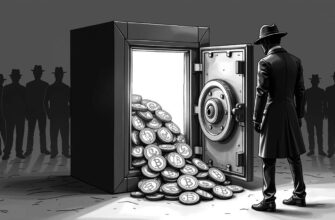What is cryptocurrency? Why is the term so inaccurate?
Today, across the crypto industry, from experienced institutional investors and fund managers to those just getting started in the market, there is widespread confusion and misunderstanding.
The primary cause of this confusion is a combination of incorrect terminology and the rapid evolution of cryptos over the last decade or so.
The term cryptocurrency has proliferated rapidly ever since the inception of Bitcoin, which as a platform primarily used as a means of exchange and storage of value, was a fundamentally correct use of this term.
However, as the market has expanded and new coins and tokens have entered the scene, the term has retained significantly less relevance. This is because the vast majority of coins and tokens today are in fact not currencies at all.
Thousands of “cryptocurrencies” that exist today are misrepresented under this umbrella term. The fact is that they’re not currencies. You can’t use the vast majority to make payments, they don’t effectively store value, and they’re not a unit of account either. These are the main attributes of a currency. Aren’t they?
The term cryptocurrency is, therefore, a misnomer and does a big disservice to the crypto industry as it misleads and does not accurately represent the 2018 crypto market.
This post will focus on a more accurate set of terms that are better suited for the current crypto market. Instead of labeling everything a cryptocurrency, it will explore the crypto asset class and three different types of sub-asset classes that make up the market today.
What is an asset class?
Robert Greer, author of “What Is An Asset Class, Anyway”, a seminal paper on the definition of an asset class, states:
“An asset class is a set of assets that bear some fundamental economic similarities to each other, and that have characteristics that make them distinct from other assets that are not part of that class.”
What is a crypto asset?
According to the International Monetary Fund –
“they are digital representations of value, made possible by advances in cryptography and distributed ledger technology. They are denominated in their own units of account and can be transferred peer to peer without an intermediary.”
I define the term crypto asset as the following, which is similar to above –
“an emerging asset class that uses cryptography, P2P networking, and public/private ledgers that generate new digital units, while verifying and securing transactions without an intermediary.”
You can find a number of different definitions by doing a simple online search, however, most definitions will be pretty close to the above examples.
Dividing the crypto asset class
The crypto asset class can be divided into separate sub-classes, each with their unique properties. They function and similarly react to the market, follow similar valuation models, and act within similar regulator risks and compliances.
In traditional finance, analysts apply different investment strategies for stocks and bonds, so, why wouldn’t we think the same when analyzing Bitcoin and Ethereum?
This is precisely what Chris Burniske and Jack Tatar propose in their book – CryptoAssets: The Innovative Investor’s Guide to Bitcoin and Beyond. Here, they separate the crypto asset class into three distinct sub-classes: cryptocurrencies, crypto commodities, and crypto tokens. Let’s break down each one.
Cryptocurrency
The primary term used in the market today, a cryptocurrency is a form of digital currency that uses cryptographic principles. Currencies have three main purposes:
- Means of exchange
- Storage of value
- Unit of account
The most popular cryptocurrency today is Bitcoin, an open-source P2P payment system that allows transactions to get sent via a decentralized platform, without a financial intermediary. A cryptocurrency’s primary use is to provide a means of exchange between two parties with a unit of account. Bitcoin, besides its use of speculative value, allows two or more parties to send transactions to each other without an intermediary.
Stablecoins such as Tether and MakerDAI also fall into this category. In general terms, a stablecoin is a type of cryptocurrency that has price stable characteristics. Most stablecoins are pegged against the US dollar, and they help investors retain their trading profits without the need to withdraw into FIAT currency and hedge against market volatility.
Crypto commodity
A commodity is an “economic good or service that has full or substantial fungibility.” A crypto commodity uses fundamental cryptographic principles within a platform to allow for the creation of new, independent digital assets that can represent an entirely unique set of values.
A helpful analogy is Gold. Gold as a commodity, and a gold necklace as a refined version of the commodity with different values.
The largest crypto commodity in the market today is Ethereum, an open-source distributed computing platform, and operating system. Unlike Bitcoin, Ethereum enables the ability to develop uncensored, decentralized applications known as dApps. Decentralized applications under the Ethereum network utilize smart contracts that can be used to differentiate from another, in the form of ERC-20 tokens. These tokens are classified as crypto tokens, which will be explained in more detail in the next section.
Although it could be argued that Ether, the payment system that allows Ethereum’s machines to execute requested operations, could be valued as a medium of exchange, the primary functionality of it is to provide a fungible, economic good or service.
Crypto tokens
With the launch of Ethereum, the crypto asset market has been swarmed with a large number of dApps, each with its unique use-case and native unit. These native units are usually referred to as crypto tokens, and supported by platforms.
Think of Apple like Ethereum, a crypto commodity with its operating system and each app in the App Store as a crypto token.
Each crypto token tries to tackle a use-case that targets a specific industry. WAX for the gaming industry, OmiseGo for the payments industry, etc. Tokens are a representation of an asset or utility and are usually fungible and tradeable.
There are three main types of tokens: utility, security, and hybrid tokens.
Utility tokens, also known as user tokens or appcoins, provide future or current access to a company’s products and services.
Security tokens primarily derive their value from an external source, usually a tradable asset. These tokens provide the ability for companies to issue tokens that represent shares of a company stock. However, security tokens are subject to federal securities regulations. If you want to learn more about the laws and regulations for ICOs, check out this article.
Hybrid tokens are tokens that do not necessarily carry the traditional features of a security but may be valued for both practical uses on a platform and investment purposes. Hybrid tokens provide benefits for two different types of holders: participants who want to access the right to a specific product or service, and investors who hold for speculative value.
Removing confusion from the crypto/blockchain market
By separating the crypto asset market into distinct sub-classes, enthusiasts and investors can differentiate each crypto asset. This removes the confusion when generalizing every coin as a cryptocurrency, and enables new ideas and investment strategies for each subclass.
Furthermore, with the increased involvement of governments and their efforts to carefully evaluate the crypto asset market, it is crucial to define the asset class accurately.
Here are some examples of each sub-class of crypto asset:
Bitcoin, Ripple, and ZCash fulfill the three dimensions of a cryptocurrency: means of exchange, store of value, and unit of account.
Ethereum and SIA represent crypto commodities, a more tangible form of crypto asset that allows its blockchain platform to create value and establish new units of value.
EOS, TRON, and VeChain represent crypto tokens, utilizing existing blockchain platforms to create a unique set of values and use-cases.
In summary, crypto assets all contain the same fundamentals, such as the use of cryptography, P2P networking, and public/private ledgers. However, it is apparent that there are clear differences as well. It is these differences which must be noted if the overall crypto market to grow and mature.
Did you enjoy the article? Please take a quick moment to share it with your network. Also, if you have any questions or would like to connect you can email me at [email protected] I’m always interested in meeting people working, learning, or involved with the blockchain space.
Also published on Medium.







